Re-staining concrete refers to the process of refinishing a concrete surface that has been stained before. You can stain over-stained concrete if the surface isn’t defective, filthy, or has holes.
To re-stain over concrete, clean and degrease the concrete, sand the finish, apply acid stain, and seal the finish.
Can You Re-stain Colored Concrete?
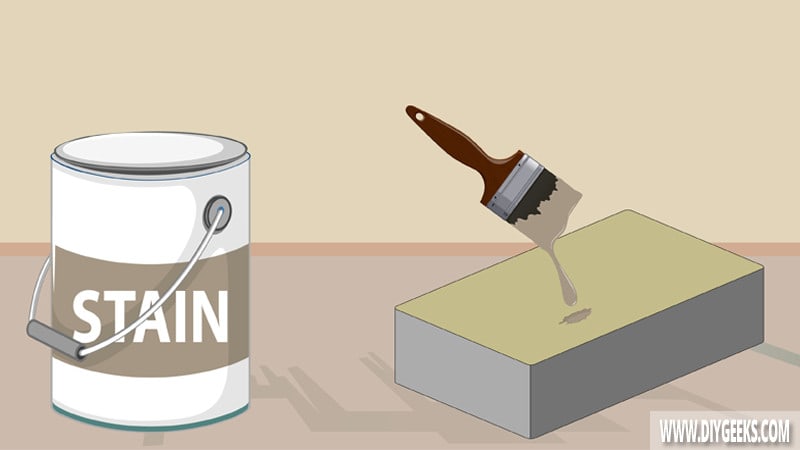
You can re-stain colored concrete to change its color. But, you must use acid stain as regular stain won’t penetrate the old hard finish of the concrete.
Use a similar color shade, don’t change the color too much (from dark to light) as the new coating can’t penetrate the old coating, so the colors will mix and the finish will look unprofessional.
To cover a different color shade, you must apply 3-4 stain coats which creates a thicker finish.
To change the color shade of the concrete, remove the entire finish and re-apply it with a different color or use a stain-blocking primer between both finishes. A stain-blocking primer will act as a barrier and prevent the old finish from bleeding through.
How To Restain Concrete?
To restain concrete, do the following things.
- Clean and Degrease the Concrete.
- Sand the Finish.
- Apply Acid Stain.
- Seal the Finish (Optional).
Here are a few things you need to know:
- You must remove the entire finish if it’s sealed.
- Use acid stains on concrete as they work best.
- Sand the existing finish to allow the new coatings to stick better.
- It’s better to remove damaged finishes than staining over them.
- It’s better to use the same color shade.
The tools you need for this project are listed below.
- Concrete sandpaper
- A gallon of acid stain for concrete
- Paint thinner
- A degreaser or concrete cleaner
- Rags
- A pair of gloves
- A paintbrush or spray gun
- Concrete Sealer
1. Clean and Degrease the Concrete
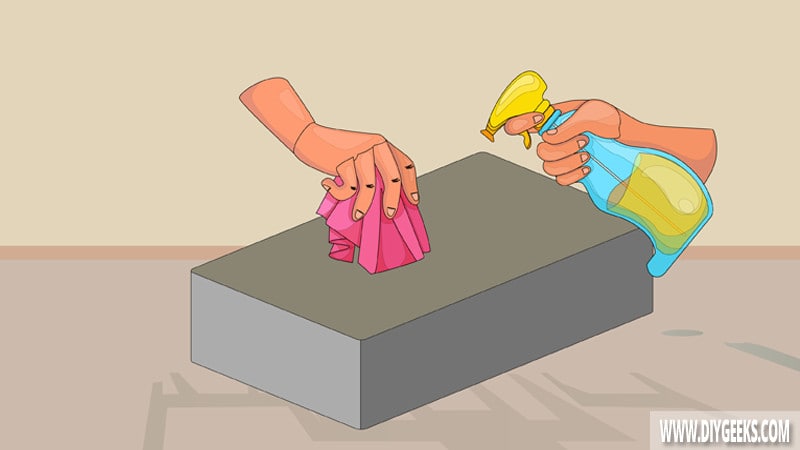
Clean and degrease the concrete surface to remove dust, grease, and dirt that can prevent the new stain coating from penetrating and adhering.
To clean it concrete stain do the following things.
- Use rubbing alcohol, TSD, white spirits, or concrete clear.
- Apply the solvent over the concrete.
- Use a soft brush to scrub (remove) the dirt.
- Remove the solvent residue with warm water.
- Don’t use too much water because concrete will take longer to dry.
2. Sand the Finish
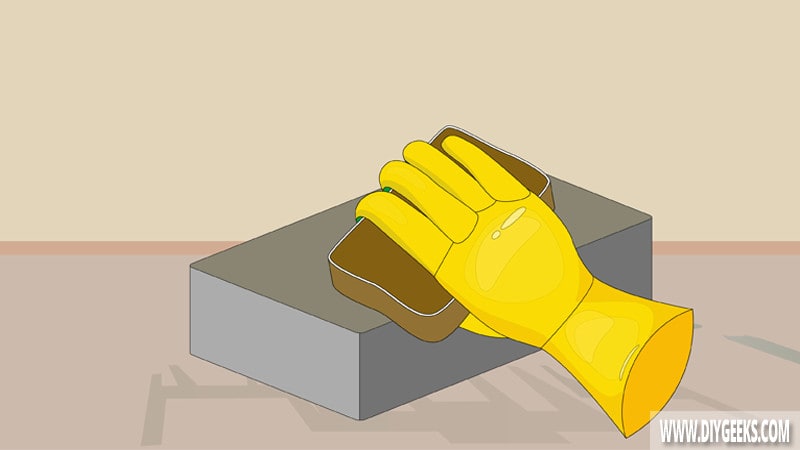
Sand the finish with fine-grit sandpaper (220-grit) to remove imperfections and bumps, and create a textured layer that the new stain coating can penetrate and adhere to.
If the concrete surface is sealed (has a top coat), remove it by using coarse-grit sandpaper (40-grit) or paint-stripping paste.
3. Apply Acid Stain
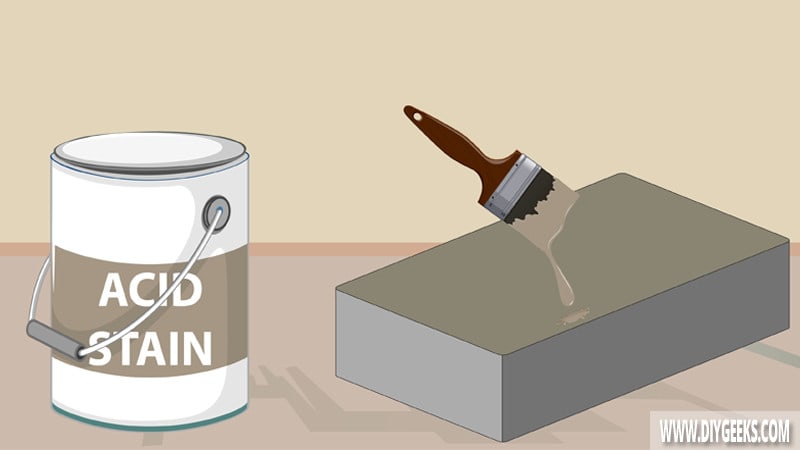
Apply three (3) acid stain coats over the stained concrete using a paintbrush or sprayer. Wait until one coat dries before applying the next one.
If you want to change the finish color shade, apply one (1) primer coat before applying the acid stain. The primer coat covers the existing finish color shade and prevents it from bleeding through.
4. Seal the Finish (Optional)
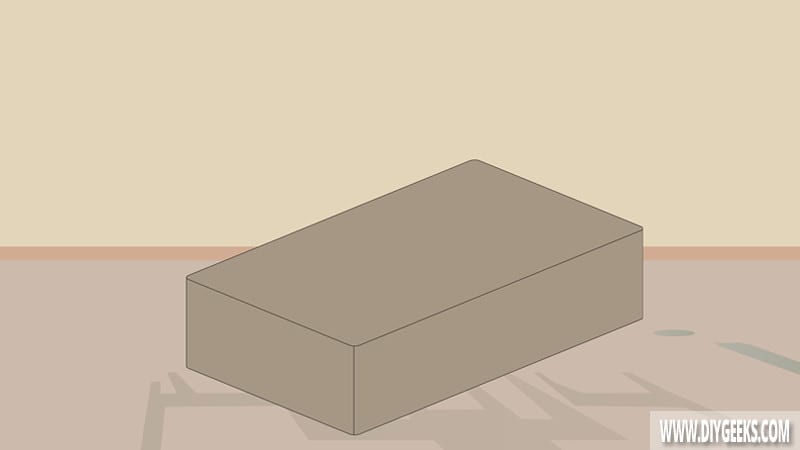
Seal the stained concrete finish with polyurethane or varnish to increase its durability and protect it from moisture, water, scratches, and weather elements.
Can You Stain Over Acid-Stained Concrete?
You can’t stain over acid-stained concrete as its finish will prevent a new coating from adhering.
Acid stains penetrate the concrete surface pores by etching and “eating” the concrete material, so the color is set inside the surface. A regular concrete stain can’t penetrate the acid stain finish and won’t stick over it. If you apply it, the finish will turn sticky.
To stain over acid-stained concrete, apply a primer or paste, or remove the entire finish first. The primer or paste will act as an undercoat (and barrier) helping the new coat to stick.
You can also re-stain concrete by applying a new coat of acid stain (with the same color shade). The new finish will look better, smooth, and have no imperfections.
Note: Don’t apply oil-based stain over acid stain as they aren’t compatible.
How Long Does Stain Last On Concrete?
Stain lasts between 18 months to 4 years on concrete. The finish doesn’t last longer as stains aren’t durable and are designed to enhance the surface’s color and not protect it.
A stain finish will make a surface look better, but it won’t protect it. If the stain finish is exposed to heavy usage, foot traffic, water, or outdoor weather elements, it will peel off. That’s because stain doesn’t have protective additives in its formula, it’s only made of colorant, binder, and solvent (oil or water).
You can increase the durability of a stained surface by sealing it with a waterproof sealer. The sealer will produce a hard moisture-resistant layer over the stain and protect it from water, moisture, and scratches.
A sealed stained concrete surface will last up to 6 years. If the stain is sealed with 2-part epoxy it will last over 8 years.


